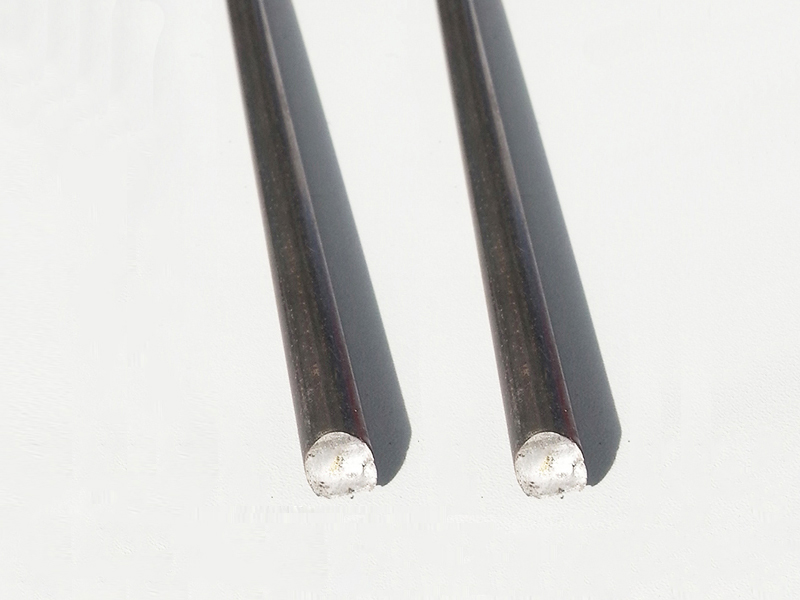+86 022 2376 3704
+86 022 2376 3704
Oct. 29, 2025
As a leading manufacturer and supplier of prestressed products, with over a decade of engineering experience, we understand the core value and application limitations of prestressed smooth steel wire. Its strengths lie in mechanical properties, cost control, and application flexibility, while its weaknesses primarily lie in its compatibility with concrete and suitability for specific applications. The following detailed analysis, drawing on project examples, will provide a precise reference for your product selection:
I. Core Advantages (Core Value of Engineering Application)
1. High Strength + Stable Performance Ensures Project Safety
Precision-rolled from high-quality high-carbon steel, standard products achieve a tensile strength of 1570-1770 MPa, while high-end customized products can reach 2200-2300 MPa. The maximum load-bearing capacity of a single wire reaches 15 tons (2000 MPa grade), significantly reducing the amount of steel used in components (e.g., reducing the cross-section of a bridge beam by 10%-15%).
- Diameter deviation ≤ ±0.04 mm, uniform tension stress distribution, and an 8%-10% higher construction qualification rate than ordinary steel wire.
- Stress-relieved products achieve a relaxation rate of ≤2.5% after 1000 hours, a 30% improvement in fatigue resistance after optimization, an elongation of ≥3.5% (L0 = 200 mm), and crack-free bending through 180°, making them ideal for critical applications such as high-speed railway bridges and high-rise buildings subject to long-term stress and high-frequency vibration.

2. Controllable costs and easy maintenance reduce overall investment.
By eliminating processing steps like scoring and rib rolling, the production cycle is 20% shorter than spiral ribbed wire, resulting in a lower per-ton manufacturing cost. The "acid-free, environmentally friendly process" reduces energy consumption by over 15%, lowering environmental handling costs.
The smooth surface makes defect detection easy, and with epoxy coating, the service life can reach over 50 years (compared to approximately 30 years for ordinary steel wire), significantly reducing the frequency and cost of subsequent maintenance. This makes it particularly suitable for municipal projects where long-term maintenance costs are critical.
3. Wide adaptability and flexible application scenarios cover diverse needs.
Compatible with clip-on (YM-type) and head-stamped anchors, it is suitable for post-tensioning (bridge beams) and pre-tensioning (precast floor slabs). It excels in high-precision tensioning applications using parallel wire strands, such as large roof trusses and nuclear power plant containment vessels.
- Applications extend far beyond scored and spiral-ribbed wire, encompassing construction (bridges, water conservancy pipelines), industry (high-pressure hose reinforcement, 10-30 MPa pressure resistance), and consumer goods (automotive springs, furniture and mattress support wire), meeting procurement needs across multiple industries in one place.
4. Convenient Construction, Simplifying Specific Processes
In unbonded prestressed structures, the smooth surface and weak bond with concrete eliminate the need for complex anchoring. This simplifies construction steps and improves tensioning efficiency, making it particularly suitable for mass production of precast components.
II. Major Disadvantages (Construction Application Considerations)
1. Insufficient Bond Strength, Requires Additional Anchoring Measures
The bond strength with concrete is only 60%-70% of that of notched wire and 50%-60% of that of spiral-ribbed wire. This makes it susceptible to slippage, leading to prestress loss. This necessitates the use of specialized anchors (swaged anchors, clip anchors) or increased anchor lengths. This not only increases anchor procurement costs but also increases construction complexity (for example, the clip top pressure must be ≥30 MPa).
2. High Construction Precision Requirements and Low Error Tolerance
Anchor installation deviations and improper tensioning techniques can easily lead to "slippage," requiring secondary tensioning and increasing construction time and costs. It is not suitable for "bonded" structures without anchors (such as some small pre-tensioned components) and must be used in combination with other types of wire, reducing the convenience of single-source procurement.
3. Poor adaptability to specialized scenarios, requiring customization.
- Highly corrosive environments: In marine and chemical applications, bare steel wire requires additional anti-corrosion coating (adding 10%-15% to the cost). Otherwise, its service life is ≤20 years, making it less suitable than FRP rebar.
- Extreme bending scenarios: In projects requiring frequent bending, such as tunnel segments, steel wire is highly rigid and difficult to bend, requiring specialized equipment and resulting in lower construction efficiency than stranded steel wire.
4. Higher cost than ordinary rebar, limiting its application in low-end applications.
Although large-scale production has reduced costs, the overall purchase price remains higher than that of ordinary rebar, making it less competitive in cost-sensitive applications such as low-rise residential buildings.

Overall, prestressed smooth steel wire is the preferred choice for projects requiring high strength and stability, such as high-speed rail, bridges, and large industrial facilities. However, for projects involving highly corrosive, small-span, bonded structures, the design needs to be tailored to the specific application.
As a single-source supplier, we offer comprehensive services, from product selection consultation to custom production. We can customize products based on your project scenario (e.g., bridges, nuclear power plants, prefabricated components) and technical specifications (tensile strength, length, and corrosion resistance). We also provide free technical solution optimization to help you balance performance and cost. For detailed prestressed smooth steel wire specifications, project case studies, or to request a real-time quote, please contact us at any time. Alternatively, you can visit our official website at https://www.yxmaterial.com, contact our online customer service team, or leave a message. We will provide professional and efficient service !
What Are the Causes of "Slippage" and "Breakage" in Prestressed Steel Wire Construction?
How to Solve the Problem of Steel Wire Slippage During Prestressed Construction?
Whether you'd like to get more info on what, need help with what you're creating anytime… anywhere.
Yuanxian High-tech Material is a company serving a worldwide customers base providing innovative and reliable product solution that recognizes the value of customer care.
Quick Links
Product Category
Subscribe Newsletter
Welcome to subscribe toour email message!
